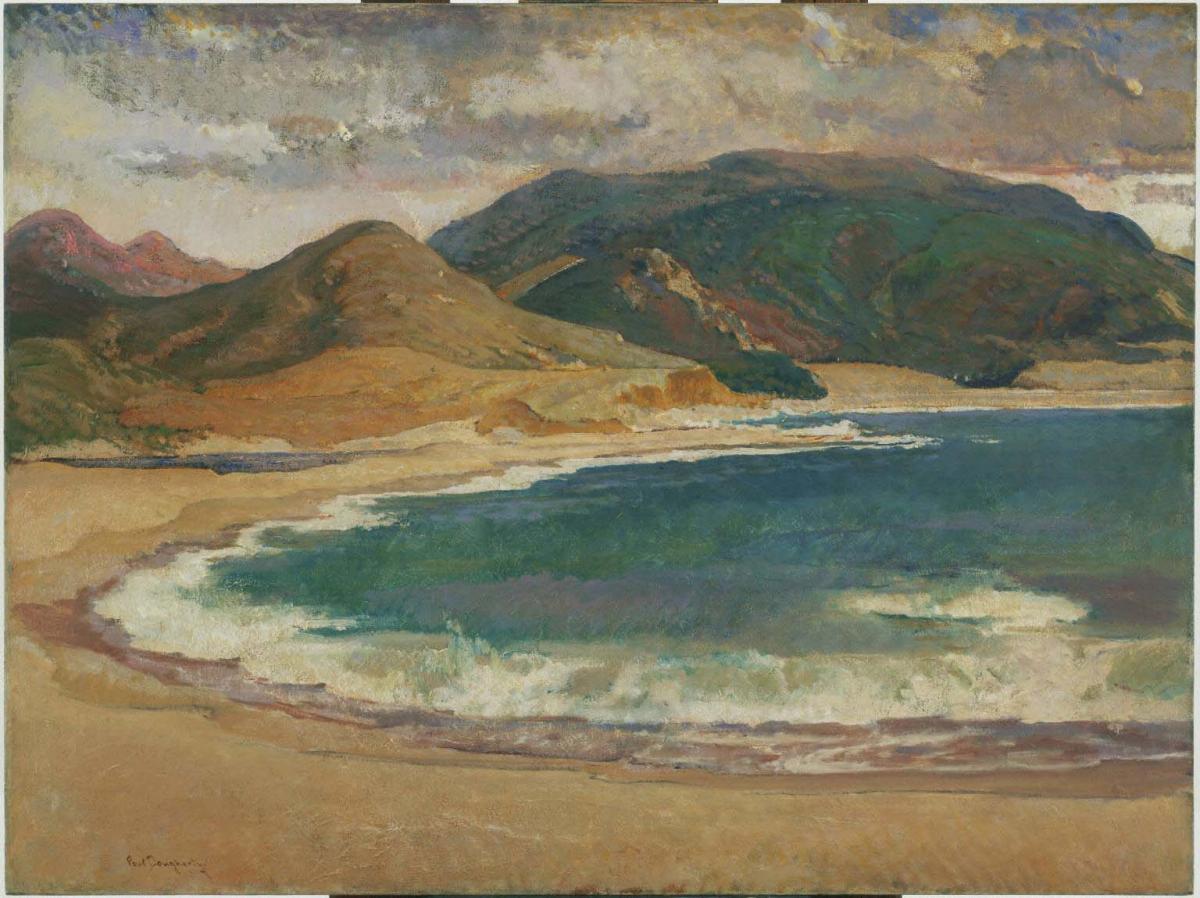The Round of the Bay
Paul Dougherty ( between 1915 and 1918 )

Acclaimed as “the foremost marine painter of the younger generation”, critic Anna Seaton-Schmidt wrote of Paul Dougherty in 1910 that his work fascinated with “interpretations of the ocean’s endless moods.” Consequently, Dougherty was showered with awards, and nearly every major museum in this country acquired his canvases. However, his more radical contemporaries did not appreciate his work or success, and he was rejected by his peers.
Dougherty’s early works (1906-12) are characterized by short choppy strokes, a muted palette of earth tones, and an emphasis on form. The Round of the Bay, painted in Carmel Bay, California, is characteristic of this period. Its saturated complementary colors interact as they depict quiet, undisturbed waters, distant hills, and dense cloud formations. Although he still employed daubs of color as accents, Dougherty now defined form through broad sweeps of color, thus producing an effect of grandeur. The carefully developed composition is unified by the reiteration of shapes, for instance the way in which the bay seems to mirror the distant mountains. Regarding his work of the late teens, Dougherty declared: “What I want as I grow older is a richer and deeper interrelationship in a work of art….In other words my view-point…becomes classic in that it desires…that the expression itself should strive toward perfection; that it should be formed as [if] it were from within, not shaped from without.”
Duncan Phillips attributed Dougherty’s “inspired zeal for rhythm of line and patterns of color” to the influence of Arthur B. Davies. In 1921 Phillips visited the artist in his studio in New York to introduce him to his fiancée, Marjorie Acker. Dougherty was a close friend of Marjorie’s uncle, Gifford Beal, and a fellow member of the Century Club. During Phillips’s lifetime he would acquire sixteen of Dougherty’s works. He deaccessioned seven pieces to make room for other artists but kept several significant paintings, including The Round of the Bay as a representation of Dougherty’s fine skills during his formative years.